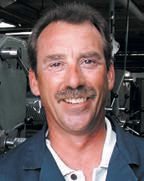Design, plan and implement
Peter A. Oglevie | TLT Shop Floor December 2011
But everyone is human, so be sure to allow a little wiggle room in your operations.

A good field engineer starts by collecting a lot of information.
www.canstockphoto.com
I HAVE BEEN WORKING ON MY HOUSE AGAIN. The project this time is a crash remodeling of the first-floor apartment. So far I have filled three eight-yard dumpsters. I tore walls down to the brick and studs, removed plumbing, electrical, ceilings and floors. It has been just over three months since I have had a day off. I started the project by setting a goal, designing what I wanted and lining up the help I needed to implement the process for getting the work done.
At the beginning of the project I measured everything. I slept with my tape measure and notebook. This is what I call my “noodling” (my own word for planning) stage. Fancy people might refer to it as the design stage. Noodling fits me fine.
On the shop floor there also must be a goal and design. The goal might be different from one shop to the next, but there is always a goal. In the field, the No. 1 goal I was asked to achieve was, can you save me money? The answer of any good sales engineer is, of course, yes!
But how do we know? Does your customer truly know what he is paying now? Does he realize there might be other costs affected by the lubricant? Did he do his homework? Chances are no.
A good field engineer starts by collecting a lot of information. Much like I started with a tape measure on my house, we start on the shop floor by asking about tools, machine speeds and materials.
With this information we can start planning. I wanted to convert my apartment from a two-bedroom apartment to a one-bedroom apartment. This meant checking walls for load, electrical and plumbing.
On the shop floor the load could be thought of as the work. You still have to make the part, so you can’t just substitute a lesser product for a more expensive one. But maybe you can build flexibility into the way it is applied or into the chemistry to benefit other parts of the process or even eliminate operations. This is real dollar savings the prospective customer may not even realize are part of his cost.
Costs often overlooked are cleaning, waste, oil dry and tool life. Remember, on the shop floor the operator’s job is to make parts. The operator will do the best he can with what he has available. Much like I run around with a level and a tape measure, the operator uses whatever is at his disposal to control a lubricant. That may be sight, smell or sound. Give your operator the equivalent of a level and tape measure, refractometers and pH meters and the training to use them properly.
That brings us to implementation. On the shop floor it is about getting the parts out the door. If you can help the operator do this better, you will get the account. If you can’t, the prospect will politely say “thank you” and “see you later.” Do your homework and be ready to run the test on time with minimal time for setting up your product. Have your tools for controlling the product on hand and explain them to the operator. You can bet the operator will appreciate getting this information.
Shop floor operators are people just like you and me. They have brains, know their jobs and have information they will share with you. Keep an open mind to suggestions they may offer. I did this on the house apartment with the man tiling the shower. I let him do his job. He came up with a border and wraps I would not have put in. Everyone comments on how nice it looks. All I had to do was listen and let him do his job.
My apartment project goal was 100% occupancy with as little maintenance as possible when the job was done. I have three people who want to rent it. The new plumbing and electrical will not require any work for years.
Many of the processes I set up on shop floors are still in operation years later because I followed the same steps: Design, plan and implement with flexibility.
 Pete Oglevie is president of International Production Technologies in Port Washington, Wis. You can reach him at poglevie@wi.rr.com
Pete Oglevie is president of International Production Technologies in Port Washington, Wis. You can reach him at poglevie@wi.rr.com.